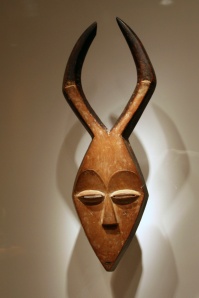This painting is most likely a depiction of the time the artist Ibrahim El Salahi spent in prison. The nine sections in this painting represent the phases of his incarceration. Arms and fists depict an uprising against injustice.
In Disagreement, Martin Kamuyu tries to depict chaos in a common man’s mind when he seems to be overwhelmed by his own thoughts. Shades of white and red represent passion and purity.
This is a painting trying to depict the condition of migrant workers in South Africa.The painting is a collage of images depicting various aspects of “Semekazi’s” life. At the center is Semekazi’s bed which has been shown in the form of a prison. In the foreground, there is a bible which has been connected to the bed by a chain. This symbolizes that African nations were run on Christian beliefs. To the left of the bed, there is an image of a family which symbolizes that he always aspired to lead a family life.
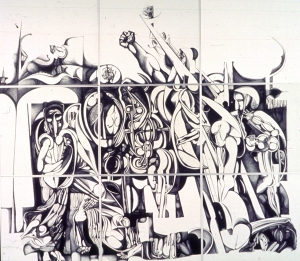
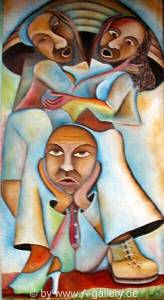
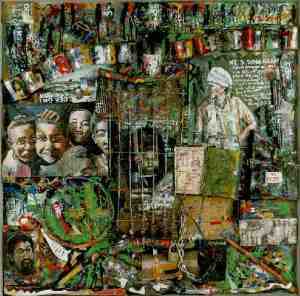

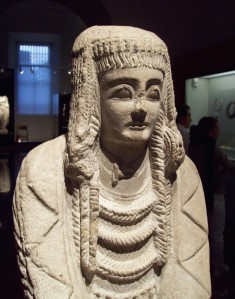
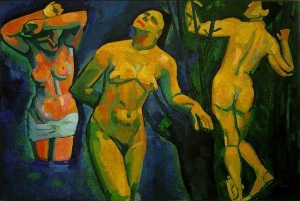

 Kota figures have very stylized heads and simplified lozenge shaped bodies. Their faces are oval with a convex surface to represent males or a concave surface to represent females. The Kota are several different groups of people who share a similar culture. The word ‘kota’ means to bind or link together. The Kota live in an area that stretches from East Gabon into the Congo. Kota masks are believed to protect the relics of an ancestor. The Kota save the relics of their ancestors and they believe that they can call on their power to assist them with their troubles in this life.
Kota figures have very stylized heads and simplified lozenge shaped bodies. Their faces are oval with a convex surface to represent males or a concave surface to represent females. The Kota are several different groups of people who share a similar culture. The word ‘kota’ means to bind or link together. The Kota live in an area that stretches from East Gabon into the Congo. Kota masks are believed to protect the relics of an ancestor. The Kota save the relics of their ancestors and they believe that they can call on their power to assist them with their troubles in this life.
